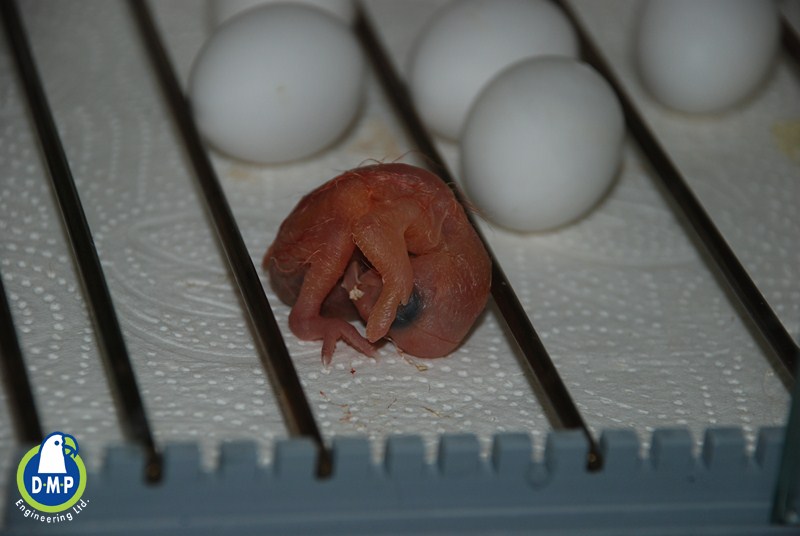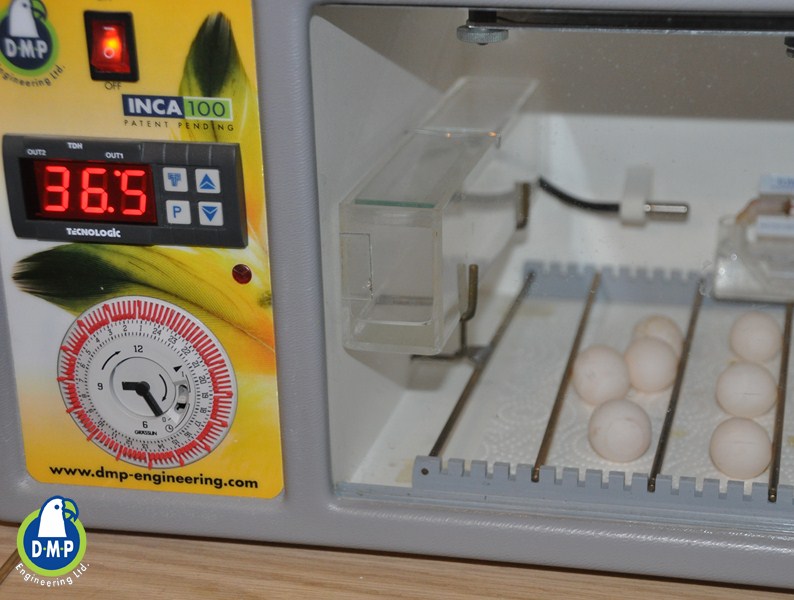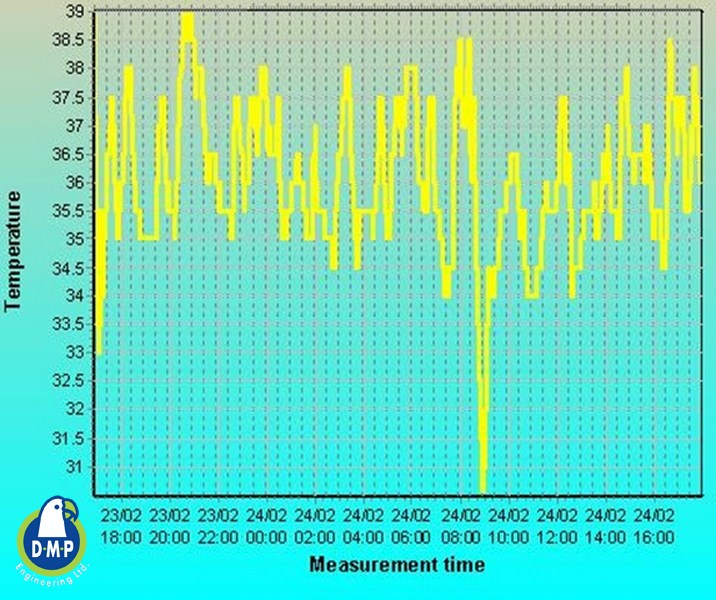The key to perfect hatching
11
May, 12
posted on 8:02 pm by Aviva
Not all eggs are created equal. Different eggs have different size, shell thickness and porosity, even if they’re from the same clutch. All of these factors affect the moment of hatching.
Every species has its own incubation period, from the moment an egg was placed in the incubator up until the moment of hatching. As mentioned in a previous post, at the end of this period the egg must have already lost around 15% of its weight. Most of this weight loss occurs naturally as a result of liquid evaporating through the porous eggshell. However, if not enough weight has had been lost, then the embryo itself takes measures to rectify the situation during the last days of incubation.
As the days near hatching, the embryo self-regulates its weight loss. It does this by taking into account its cumulative weight loss and the environmental RH and peforms the external PIP at the appropriate time. The additional puncture in the eggshell increases the egg’s capacity of evaporation, enabling it to lose more weight. This means that if an embryo “feels” it’s too wet, it will make the first PIP sooner to reach an optimal condition for hatching.
When the embryo performs the external PIP, it starts breathing with its own lungs. At this moment we can hear it twitting. The twitting is the embryo’s announcement to the world: “I am alive and feeling fine…”.
Have patience though, as it could take up to three days from the moment of the first PIP until the the chick has completely hatched. Don’t be tempted to intervene and “help” the chick to hatch after the external PIP. The natural hatching process is crucial for vivid and energetic,healthy chicks. Any intervention of the natural process of hatching is dangerous and might cause the embryo to die! The Inca Incubator was designed with the crucial factors of the natural incubating process in mind, so we must avoid the temptation to interfere and let nature run its course…
Lets take a look at a real life example from our aviaries:
A clutch of Adelaide Rosella (Platycercus adelaidae) eggs was placed in the Inca Incubator 20 days ago. 19 days later we could notice the first PIP and then no change for the following 24 hours. When we checked the incubator yesterday morning at 8 o’clock, we still didn’t notice any movement but after one hour – the chick was out of the eggshell…
 One more point to emphasize: during the actual hatching, the relative humidity (RH) percentages increase “automatically“ because of the evaporation of the egg’s fluids. Do not manually alter the humidity level at this point , as this is a very critical moment during the hatching process and crucial for the chick’s development. This evaporation process has no influence on the other eggs in the incubator but it allows the chick to hatch properly. After the chick has hatched and “dried up”, the RH will naturally return to its appropriate level.
One more point to emphasize: during the actual hatching, the relative humidity (RH) percentages increase “automatically“ because of the evaporation of the egg’s fluids. Do not manually alter the humidity level at this point , as this is a very critical moment during the hatching process and crucial for the chick’s development. This evaporation process has no influence on the other eggs in the incubator but it allows the chick to hatch properly. After the chick has hatched and “dried up”, the RH will naturally return to its appropriate level.
Some breeders use less effective methods of incubation such as increasing the humidity levels before the final stage of hatching or even relocating the eggs to a Hatcher –
However this is unnecessary with Inca Incubator because the entire hatching process is happening naturally as explained here. Because of the same reason, there is no need to manually stop the egg-tray. The Inca egg-tray was designed so that it moves slowly and gently turns the eggs, in the same way this happens in nature with the brooding parent. The chick can not be hurt whatsoever by this smooth movement – it will only receive a harmless nudge…









![egg4 [800x600]](http://www.dmp-engineering.com/wp-content/uploads/2012/01/egg4-800x600.jpg)
